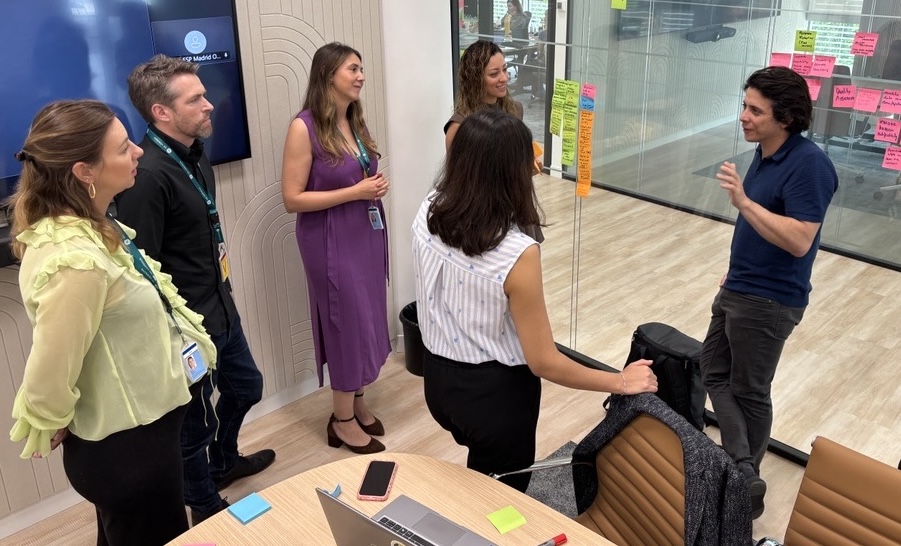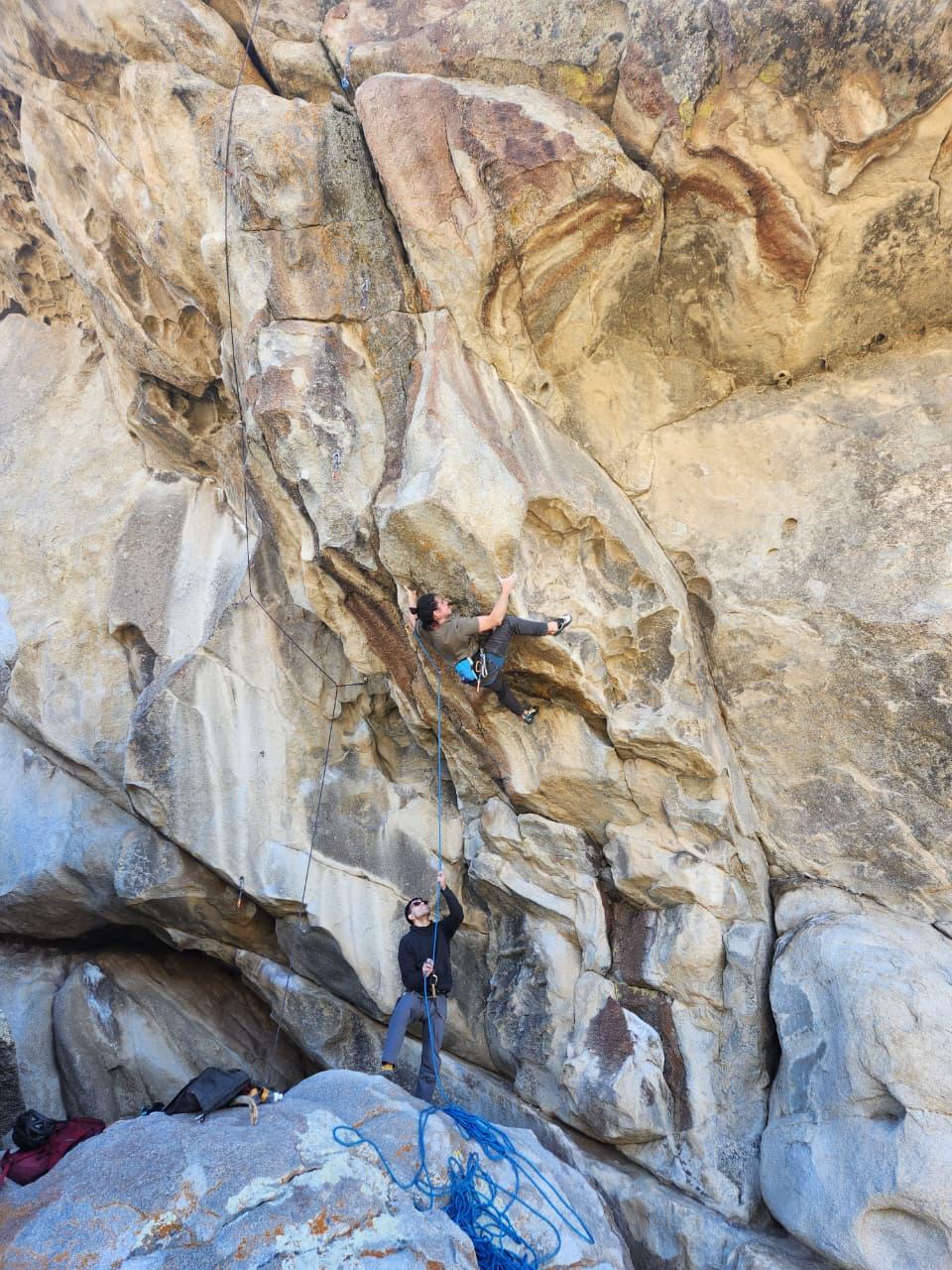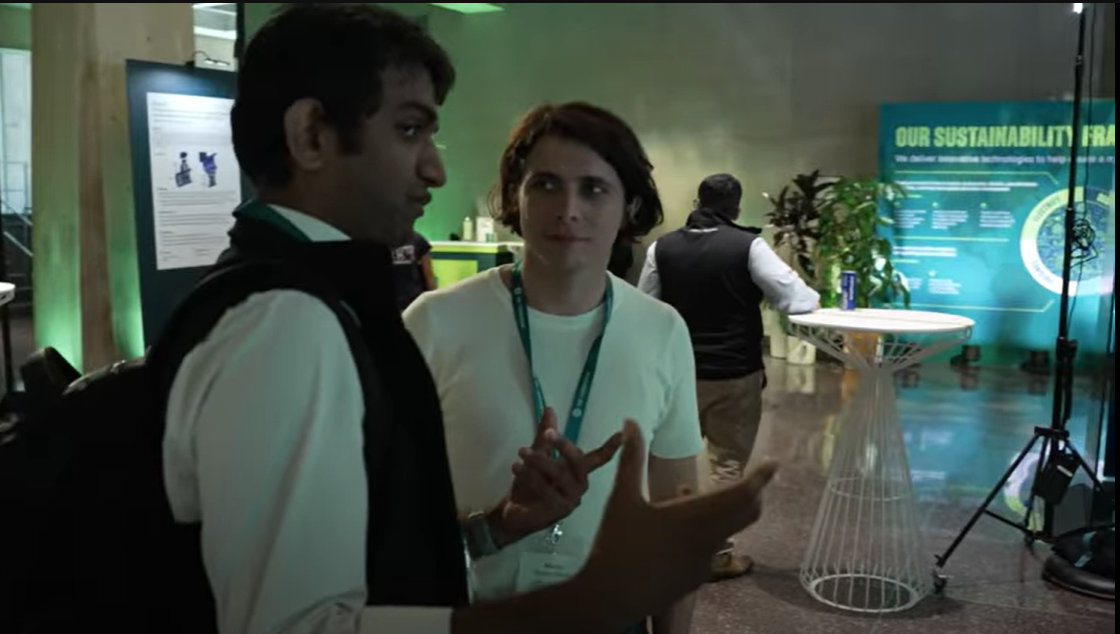How does a rock climber from Chile wind up working in America’s intellectual capital, Cambridge, Massachusetts? For Matias Opazo, a pivotal meeting last year with GE Vernova CEO Scott Strazik sparked the beginning of a new career chapter.
In April 2024, GE Vernova welcomed Opazo and his fellow Massachusetts Institute of Technology (MIT) Supply Chain Management graduate students to its headquarters in Cambridge. During their visit, they engaged in a candid “Speak Easy” session with Strazik and the Global Supply Chain leadership team to gain firsthand insight into how GE Vernova is optimizing its supply chain to drive the necessary changes for electrifying and decarbonizing the world.
For Opazo, the company’s mission aligned with his values. This was the key reason he chose to join GE Vernova instead of following the typical MIT path toward a Big Five company. “I wanted to work somewhere that prioritized impact and aligned to what matters to me,” he explains. “GE Vernova is a catalyst for delivering more secure, sustainable, reliable, and affordable electricity and help drive global economic development.”
Another reason Opazo felt confident in his decision was the company’s leadership. Strazik brought a mindset that stood out — describing the newly independent company as a 130-year-old startup. That framing resonated. While many legacy companies lose their edge over time, this felt different: a place with history, but also urgency and ambition. For Opazo, that mix of purpose and entrepreneurial spirit made GE Vernova the right place to be.
Electricity for the People
Opazo’s connection to energy began during his time climbing in the mountains above Santiago. Growing up surrounded by nature, he developed a deep respect for the environment — but also saw up close the challenges of balancing that with the growing demand for energy.

Transmission lines and infrastructure were gradually making their way into those landscapes he cared about. It wasn’t easy to watch, but he understood the trade-off between preserving nature and meeting the energy demands of a developing country. Millions of people in the city below needed electricity — how to meet their energy needs while protecting the natural world?
With a year under his belt at GE Vernova, Opazo is fast at work answering that question. In a very short time, he has been a key force in helping GE Vernova accelerate the transition to more reliable, affordable, and sustainable energy. Over the past year, he has traveled through GE Vernova’s factories, connecting with employees and seeing innovation take shape firsthand. He is partnering with GE Vernova’s business leadership on long-term strategy by leveraging the next-generation supply chain (NGSC) framework to accelerate initiatives that drive transformation and unlock value across the supply chain. Most recently, his focus has been on supporting GE Vernova as it enters a new era of automation — building on its lean foundation and increasingly deploying robotics to keep GE Vernova at the cutting edge of manufacturing technology.
Onboarding the Robots
Working closely with stakeholders in GE Vernova’s Power Transmission business, the company’s lean leaders, and GE Vernova Advanced Research (ARC), the team is helping global sites prepare their supply chains for the next wave of robotics integration. This starts with lean readiness, moves to technological capabilities, and then scales up to advanced robotics.
According to Opazo, the corporate pathway toward more automated manufacturing gained new momentum late last year with a series of NGSC workshops. These sessions brought together Power Transmission leadership, employees from production sites, and the ARC’s Robotics and Automation team. “We connected the dots, leveraging the incredible experience and technology of the ARC and bringing that expertise to our factories,” he says.

“We went to genba,” he continues, referring to the Japanese concept of the “actual place” where the work is done, “to understand how we could best use our experience and capabilities to streamline manufacturing processes. By the end we had a list of eight projects with strong business cases that we’ll execute in the near future. The team is excited — it’s a tangible output of our team effort.”
He also emphasizes that “none of this would have been possible without the engagement and commitment of our colleagues across the world. At GE Vernova there is one constant I’ve seen everywhere I go: It’s our people who drive this transformation. We truly are One Team.”
Lessons from the Mountains
For Opazo, Cambridge is an inspiring place to be. It’s a hub for innovation and cutting-edge science that keeps him connected to his community and fellow MIT graduates. “It’s exciting how easily you can dive into deep technical conversations here,” he says. Recently he met up with a friend from MIT, a PhD in applied math, and they got to talking about “supply chains as systems, modeling the flow of materials, information, and resources as a network.” Then they moved on to the subject of tariffs and policy changes, reflecting on how these add another layer of complexity.

By addressing the dilemmas he faced as a teenager, Opazo has found a meaningful way to contribute to the electrification and decarbonization of the world, seeking to balance the needs of nature and society. In his role as a supply chain strategist, he helps the company expand production of essential infrastructure, with a focus on durability and lasting impact. “Robotics and automation will certainly play a role in increasing our capacity — both in terms of how much we can manufacture and how quickly we can deliver,” Opazo says. “They enable more consistent quality and increase the lifespan of our products, which has an important impact on sustainability.”
Since moving to Cambridge, Opazo has made the most of the region’s outdoor climbing — from the White Mountains of New Hampshire to the Shawangunks, near New York’s Hudson Valley. He’s also traveled west to the California Sierras and the mountains of Wyoming. Climbing, he says, gives him a chance to step away from the day-to-day and recharge.
Just like the slow, deliberate effort of progressing in climbing, the transition to more reliable, affordable, and sustainable energy is a long journey that requires patience, resilience, and steady, purposeful action. It reminds him of a particular climb in Bishop, California, a boulder with a massive overhang and tiny holds. It’s proven especially challenging, motivating him to return again and again to overcome its crux. “I’ve been trying it for a few years now,” he says. “I still haven’t succeeded, but the fun lies in the process.”

